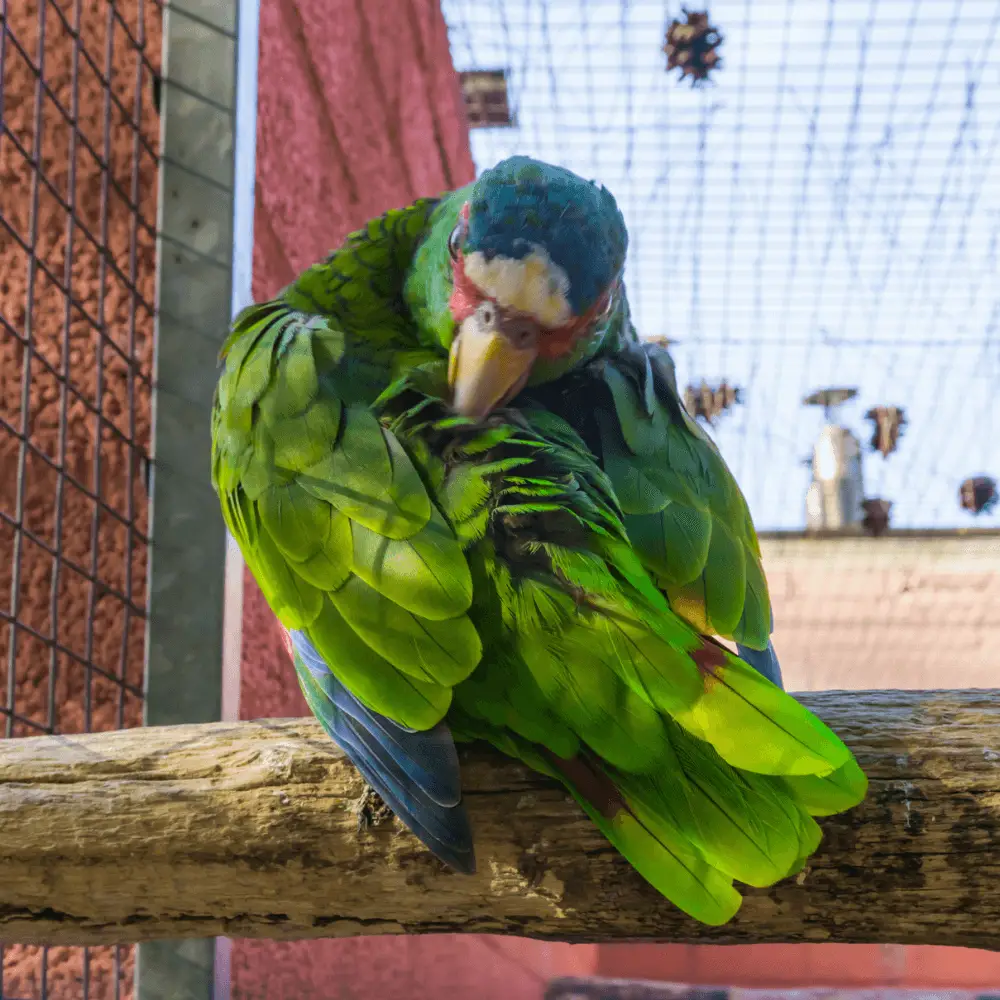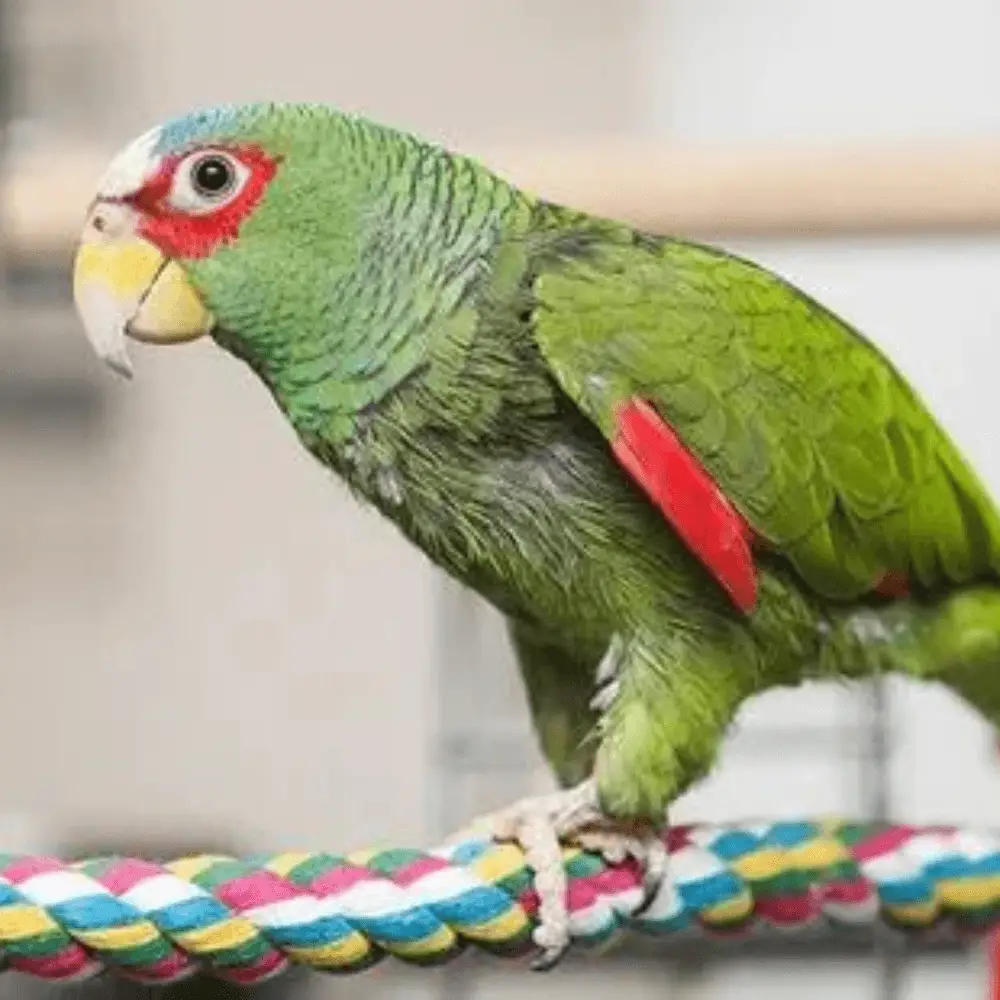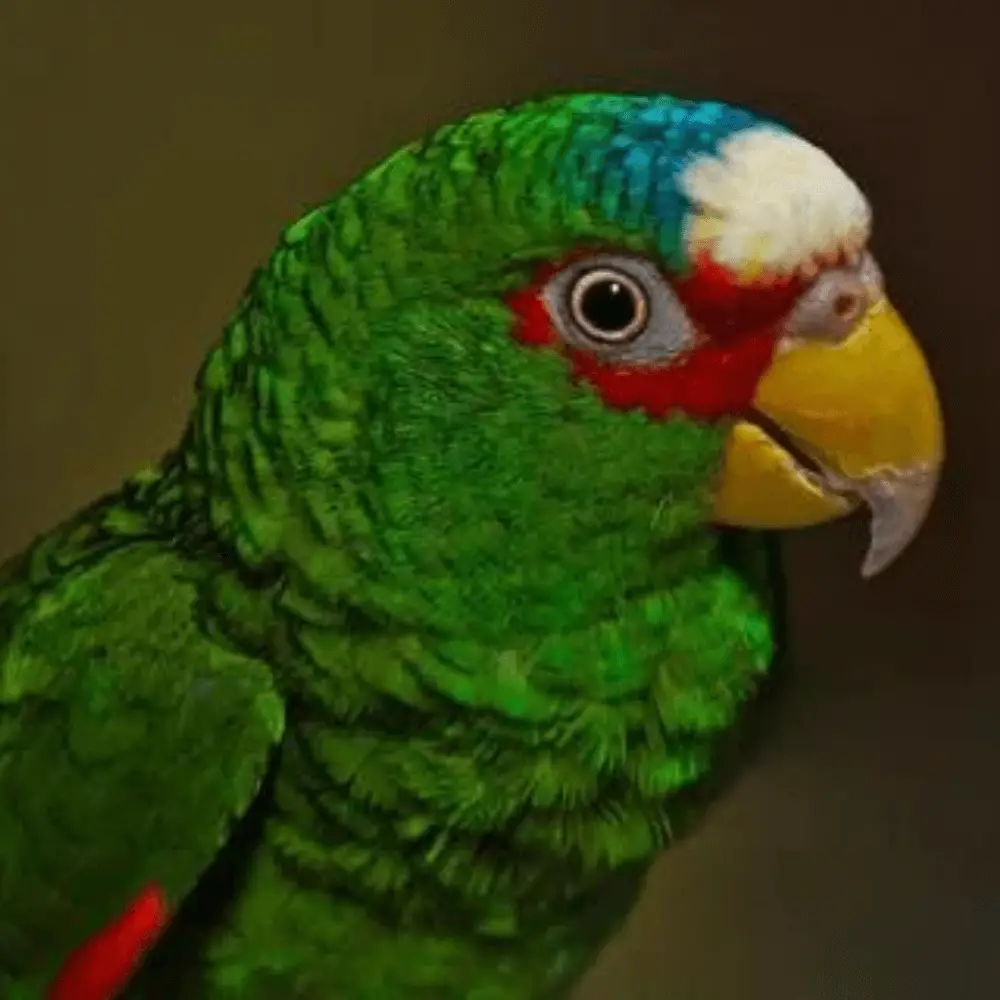White-fronted amazon: though medium in size within the entire parrot group, is one of the smallest species of Amazon. But despite its small size, this bird has a huge assertive personality.
Even in the wild, it often approaches people, and in captivity, it tends to form close bonds with a single individual, who displays remarkable friendship. Its personality, colorful plumage, and remarkable ability to talk—along with its relative affordability—make this animal a favorite among Amazon parrots.
The taxonomic name for this bird is Amazona albifrons subsp. albifrons. There are two other subspecies: the less furry white-fronted Amazon ( Amazona alibrons subsp. nana ), and the white-fronted Amazon ( Amazona albifrons subsp. saltuensis ).
The Lesser Minor in color is slightly smaller and darker in color, which has a white front that is more teal on top of the head.
Amazon size
The smaller Amazon species, however, the white-barred amazon usually only reaches about 10 inches in length from the beak to the tip of the hind tail.
White-fronted amazon habitat

White-fronted Amazons are a group that extends from Mexico to western Costa Rica and are also found in Belize, El Salvador, Guatemala, and Honduras.
Their preferred habitat includes both brushwood grasslands and tropical deciduous forests, and they may live in pairs or in small flocks of 20 to 30 birds.
The bird was first described and classified in 1788 by the Swedish naturalist Anders Sparmann.
It is abundant in the wild, and the IUCN (International Union for Conservation of Nature) designates it as an endangered species of the least concern (LC). Pet owners need not fear that they are a danger to wild inhabitants.
White-fronted amazon lifespan
These are long-lived birds in captivity, often surviving for more than 50 years.
Amazon behavior

White-fronted Amazons are not particularly suitable as pets for large families with children but they can be great for a single owner. They get on very aggressively with their owners, but some of them tend to become “one-person birds.”
It is best to socialize her at an early age, or she becomes reclusive as she gets older. They are a good choice for owners who have plenty of free time to spend with their new bird. Like many species of Amazon, some white-barbed Amazons may go through a hormonal bluffing phase when they reach maturity.
For this reason, they are recommended for those who have experience keeping medium to large-sized birds.
The white-fronted Amazon parrot has a variety of vocalizations on its command, including whoops, strong barks, loud harsh notes, and other short, sharp vocalizations.
White-fronted Amazon colors
White-fronted Amazons are primarily green, with white and blue spots on their foreheads. They have bright red rings around their eyes, which has led many to call them “amazing Amazons”. Scattered patches of light blue can be found on their chests and bellies, and their flanks are splashed with a deep blue-red.
There is a bright red blaze on the underside of their tailfeathers, and they have flesh-colored legs and hornbeam beaks.
Unlike most Amazon parrots, you can tell the difference between males and females of this species. The female of this species is similar to the male in coloration but lacks a red edge on the wing.
Amazon care

Beautiful and intelligent, the white-fronted Amazon parrot can make a wonderful pet for the owner it bonds with. Although she may be shy around others, her love of interactive play with her owner can be a joy for others to witness.
Amazon parrots thrive on social interaction, and they need to be kept healthy and happy. Neglected birds often fall into patterns of destructive and depressive behavior, which can manifest in various physical and emotional issues.
It is important for the owner of the White-Barred Amazon to set aside time each day for one-on-one interaction with the bird, which will establish and establish a healthy bond.
While fed Amazon parrots usually make loving and affectionate pets, many go through an aggressive phase during adolescence that some owners just can’t handle. During the passage of the phase, it can sometimes last up to 2 years.
Potential owners should remember that if they adopt a white-fronted Amazon, they’re in it for better or for worse. These birds can live over 60 years if properly cared for, so caring for one is not an obligation to handle easily.
Make sure your white-fronted Amazon has a large cage. Most experts recommend a cage at least 2 by 3 feet by footprint, with a height of 2 1/2 to 5 feet. The cage should be equipped with play equipment inside, including a climbing device, as these are the most acrobatic birds.
White-fronted Amazons will tolerate a wide range of temperatures, but be sure to protect birds from drafts. Bath your parrot regularly with warm water to keep its feathers moist and clean.
Amazon food
In the wild, white-fronted amazons feed mostly on fruits, berries, plants, seeds, nuts, corn, and some protein. Like all Amazon parrots, White-fronted Amazons kept as pets are best kept on a high-quality diet, with the addition of seed mixes and daily servings of fresh, bird-safe fruits and vegetables.
A fresh and varied diet will help ensure that your bird enjoys optimum nutrition. As with all parrots, avocados, and chocolate are toxic to this bird.
Amazon training
Amazon parrots are prone to excessive weight gain, so it is important that they are allowed exercise every day. If you want a white-fronted Amazon, you should be able to give him at least 3 to 4 hours outside of his cage per day.
This will allow the birds to burn extra calories and stretch their muscles, as well as provide them with the necessary mental stimulation.
These birds are also heavy chewers and will need plenty of toys to chew on and play with.
Even providing the birds with branches and twigs can help channel their instinct to chew and keep furniture from getting damaged.
Amazon Health
White-fronted Amazon parrots can be susceptible to gastrointestinal illnesses while they are acclimating to their environment, but are very finicky after that. Some common diseases include:
- Psittacosis (parrot fever)
- Bacterial, viral, or fungal infections
- Feather picking (usually due to boredom or not proper bathing
- allergy
Related article:

